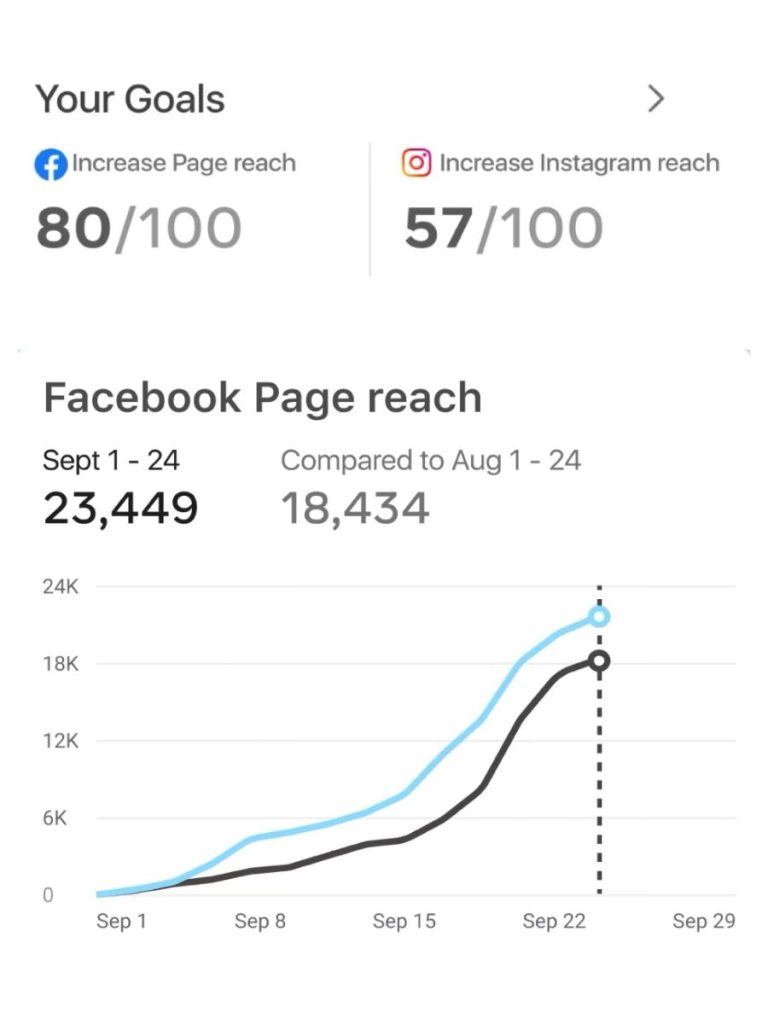Once considered mere digital playgrounds, social media platforms have evolved into indispensable tools for brand visibility, growth, and connection. Today, social media marketing is a sophisticated discipline - one brimming with potential, but only when approached with strategy and intent. In this guide, we’ll unpack what social media marketing truly entails, explore its many advantages, and show you how to build a strategy in 2025 that’s not just coherent - but powerfully effective.
*Last edit: April 23, 2025
Table of Contents
- What is Social Media Marketing?
- Social Media Marketing in 2025: Key Statistics
- Goals of Social Media Marketing
- The Advantages of Social Media Marketing
- How to Develop a Strategy That Works?
What is Social Media Marketing?
Social media marketing is a form of digital marketing that leverages platforms like Facebook, Instagram, TikTok, and others to build a brand, engage with audiences, encourage interaction, and ultimately increase sales. It encompasses:
- Strategic Planning: Creating a well-defined approach tailored to selected platforms, including goals, KPIs, content style, community management, and advertising tactics.
- Profile Setup & Optimization: Creating professional profiles – bios, links, highlights, categories, CTAs- and keeping them regularly updated and aligned with the brand identity
- Content Creation: Designing and publishing branded content – from visuals and photography to video, stories, and text – aligned with both platform norms and audience interests.
- Community Management & PR: Engaging with audiences, responding to comments and messages promptly, and offering customer support in a tone that reflects the brand’s values.
- Monitoring & Crisis Communication: Tracking brand mentions, trends, and conversations, while also managing reputation and responding swiftly during critical moments.
- Advertising: Developing and executing ad campaigns – from creative to targeting and ongoing optimization – to meet specific marketing objectives.
- Influencer Marketing: Identifying relevant influencers, coordinating collaborations, and tracking outcomes – all while aligning with broader brand goals.
- Analytics & Reporting: Continuously measuring performance, studying competition and trends, and using insights to improve strategies.
Social Media Marketing in 2025: Key Statistics
In 2025, social media shapes perception, consumption, and everyday culture. Here are just a few current statistics that underscore this influence:
- More than half of the world’s population (63.9%) uses social media, with the average daily usage reaching 2 hours and 21 minutes.
- The typical user engages with around seven different social platforms each month.
- A striking 90% of consumers turn to social media to follow trends and cultural moments – more so than conversations with friends, television, streaming services, or digital media.
- For internet users aged 16 to 34, social media ads are the primary source of brand awareness.
Goals of Social Media Marketing
The core goals of social media marketing depend on the type of brand, industry, and the stage of business development. Broadly speaking, the most important objectives include:
- Increasing brand awareness – essential for new brands or those aiming to expand their visibility.
- Building a community – key to fostering long-term customer relationships, boosting engagement, and cultivating loyalty.
- Driving traffic to a website or online store – crucial for brands looking to increase visits and prompt users to take action, such as exploring, signing up, or purchasing.
- Generating leads – especially important for B2B companies or products/services that require market education or additional communication before purchase.
- Boosting sales – a primary goal for many brands, with social media serving as a channel for both direct and indirect conversions.
- Managing brand image and public relations – vital for brands that want more control over their reputation and the ability to respond quickly in times of crisis.
- Enhancing customer support – crucial for customer-centric brands that aim to build trust through fast, effective communication.
- Monitoring and analyzing competitors – essential for refining strategies, tracking trends, and maintaining a competitive edge.

The Advantages of Social Media Marketing
By 2025, the digital landscape has evolved dramatically. Algorithms are sharper, users are savvier and more demanding, and competition is relentless. Yet one truth remains unchanged – social media continues to be one of the most powerful marketing tools available. When used strategically, it offers a range of concrete benefits no serious brand should overlook:
1. Precision Targeting of the Right Audience
Unlike traditional channels, social media enables brands to reach global audiences without geographical limitations – yet with remarkable precision. Targeting by demographic, psychographic, and behavioral criteria ensures that messages reach the most relevant people, exactly when they’re most ready to engage.
This is particularly advantageous for small and medium-sized businesses, which can achieve impressive results even with modest budgets – maximizing impact without wasting resources.
2. Real-Time, In-Depth Analytics
Social platforms offer unparalleled tracking and analysis of every marketing activity – an absolute goldmine. From ad performance and content engagement to user feedback, everything is measurable and, crucially, adjustable on the fly.
This constant stream of insights allows for swift campaign optimization and smarter budget management – delivering better results with lower costs and fewer missteps.

3. Humanizing the Brand
Unlike the one-way communication of traditional media, social networks enable brands to express personality, establish two-way conversations, and build emotional connections with their audience.
This not only increases visibility but also strengthens trust, community, and long-term customer loyalty.
4. Access to an Active, Engaged Audience
People spend hours daily on social media, exploring products, reading reviews, and seeking recommendations. They’re already in a discovery mindset – an ideal moment for brands to offer relevant, valuable content.
Social media marketing taps directly into this engaged audience, opening the door for genuine, ongoing interaction.

5. Flexibility and Scalability with Lower Investment
Compared to traditional media, social advertising doesn’t demand sky-high upfront costs. Campaigns can start small, messages can be refined, and successful efforts can be scaled.
This flexibility makes social platforms a perfect fit for growing brands – offering cost control, agility, and rapid feedback.
6. Greater Control Over Messaging and Brand Image
Brands no longer need to rely solely on traditional media for exposure – on social platforms, they become their own media. By creating original content and engaging directly with their community, brands gain full control over their messaging, image, and how they’re perceived.
This includes rapid crisis response, celebrating key milestones, and directly shaping brand reputation – no intermediaries required.
Key Elements of a Social Media Marketing Strategy
Platforms like Facebook, Instagram, and TikTok have evolved into serious communication and business tools – often the first (and most influential) touchpoint between a user and a brand. For many, they are a brand’s real-time extension. And the smartest companies treat them exactly that way.
And serious channels demand a serious approach. That means developing a social media marketing strategy – a comprehensive plan that helps define clear goals, understand the audience, communicate consistently, and make better use of time, budget, and channels.
So what are the essential components of that plan?
1. Audit of Existing Profiles
For brands already on social media, the first step is a deep-dive analysis of the current situation:
- Profiles – Are they up-to-date, professional, and aligned with the brand identity?
- Content – What’s being posted, how often, and in what tone and style?
- Results – Reach, engagement, audience growth, clicks?
- Weak points – What’s not working, what’s missing, and how does the brand stack up against the competition?
The goal is to understand where the brand currently stands – and what needs to be done to build a solid foundation.

2. Target Audience Analysis
If the brand is new to social media, the starting point is an in-depth understanding of its audience. This analysis answers questions like:
- Who are the people the brand wants to reach and engage? Age, gender, location, occupations, habits, values?
- What interests them? Topics, challenges, needs, goals.
- How do they behave online? Which platforms they use, when they’re active, what they share?
- How should the brand speak to them? Tone and style that feels natural to them?
Without this, it’s nearly impossible to create content that genuinely resonates.
3. Setting Clear Goals
Social media goals should support broader business objectives, whether it’s increasing sales, attracting talent, improving customer support, or educating the market. Brands should set goals that are:
- Specific – What exactly do we want to achieve?
- Measurable – How will we track success?
- Achievable – Is it realistic given the resources?
- Relevant – Does it make sense for the business?
- Time-bound – When do we want to achieve it?
Example:
✖ We want more followers.
✔ Increase Instagram followers by 20% in three months.
Each goal should be tied to key performance indicators (KPIs) like reach, engagement, clicks, conversions, mentions, and response time.
4. Choosing the Right Platforms
The choice of right platforms depend on a mix of:
- Audience and competitor analysis
- Past performance data
- Business goals
- Available resources for content creation and management
Once platforms are selected, it’s important to understand the culture of each, so every platform has a distinct role in a multichannel strategy. And because change is the only constant in social media, staying updated on features and trends is a must.
5. Building the Content Framework
With all insights in hand, it’s time to map out content structure across themes and channels. This step ensures communication isn’t random or reactive. It includes:
- Identifying content gaps – what’s missing or underrepresented but important to the target audience?
- Defining 3-5 core content categories the brand will consistently cover, aligned with both business goals and audience interests.
- Creating channel-specific guidelines – how each core topic will be adapted to different platforms, with the right tone, formats, and visuals.

6. Creating a Posting Plan and Calendar
This is the logistical backbone of the strategy. A smart plan ensures your presence is coordinated across channels – without lazy copy-pasting – and helps spot content fatigue or communication gaps early.
The plan should account for:
- Platform-specific best practices
- Posting frequency per channel
- Algorithm-friendly patterns
- Opportunities for seasonal, real-time, and campaign-driven content
Leave room for ad hoc posts – trending topics, timely events, or spontaneous engagement.
The resulting content calendar should include:
- Date & time of post
- Platform
- Content type & topic
- Links to visuals
- Post copy
- Status updates
- Assigned team members
7. Tracking Results and Optimization
A strategy isn’t “set it and forget it”. It’s a living document that adapts in real time. That’s the only way to ensure long-term relevance, smart resource use, and tangible results.
Regular analysis helps brands spot patterns and opportunities. Based on insights, they can adjust the content calendar (frequency, formats, themes), or revisit the overall strategy – reallocating budget, tweaking messaging, or tailoring content to better match evolving audience segments.
How Can Social Media Help Your Brand Grow?
The number of social media users is already vast – and continues to grow. Platforms like Facebook, Instagram, and TikTok are increasingly influencing people’s decisions on what to buy, where to go, what to listen to, and what to watch. Social media marketing, therefore, presents a huge opportunity to get your brand, products, services, or projects in front of thousands.
At the same time, it’s a major challenge, due to the overwhelming amount of content, advertising competition, the variety of platforms, and constantly shifting trends. Success requires a great deal of creativity, knowledge, and strategy. But the effort is undoubtedly worth it.
If you’re aiming for a social media presence that’s consistent, strategic, and actually brings results – let’s talk about what that first step could look like.



